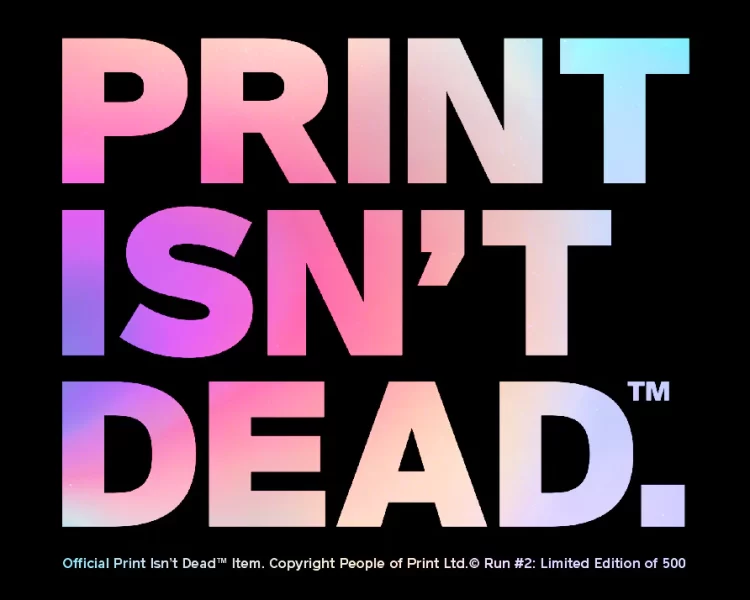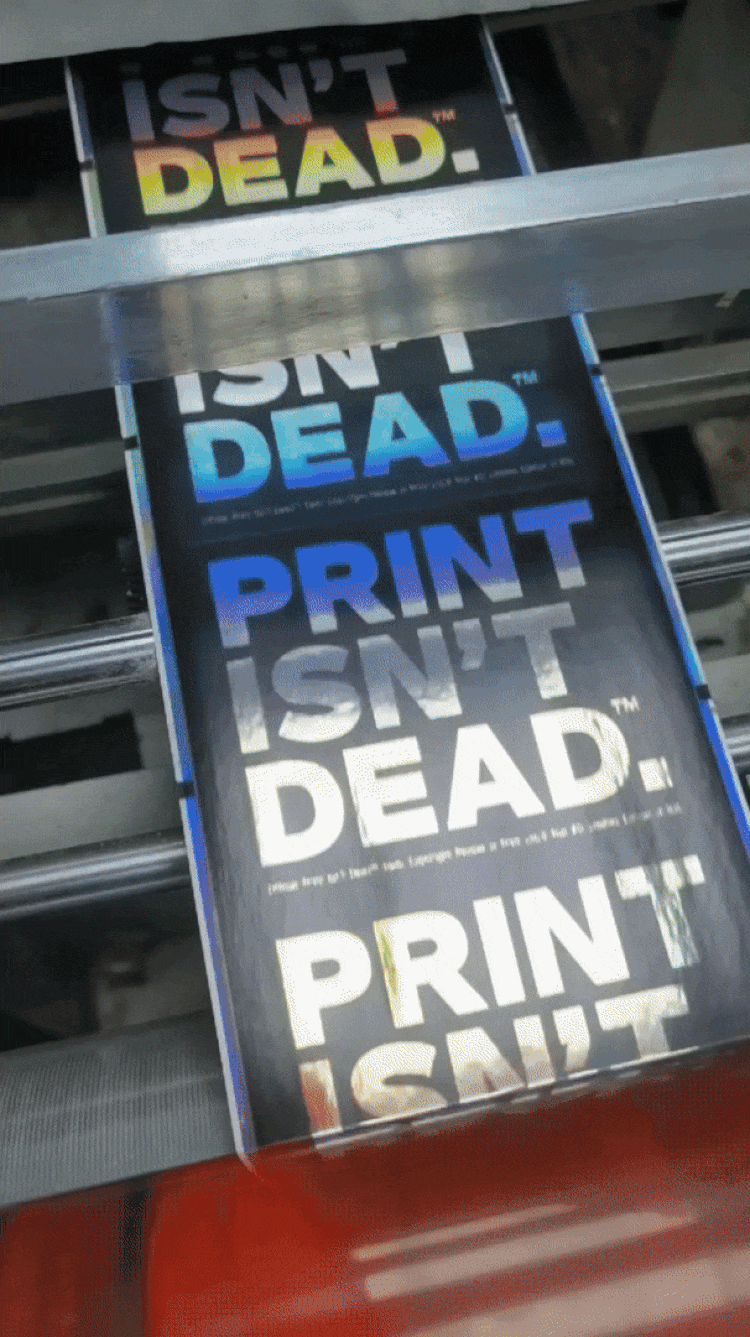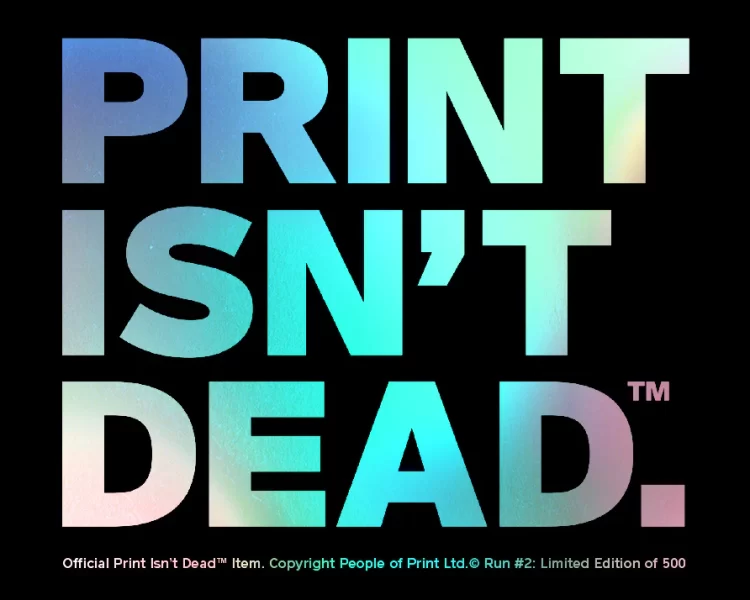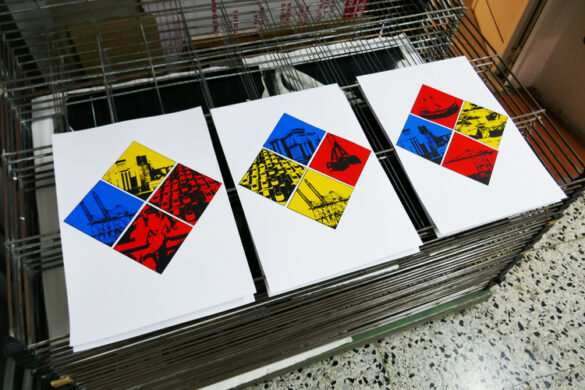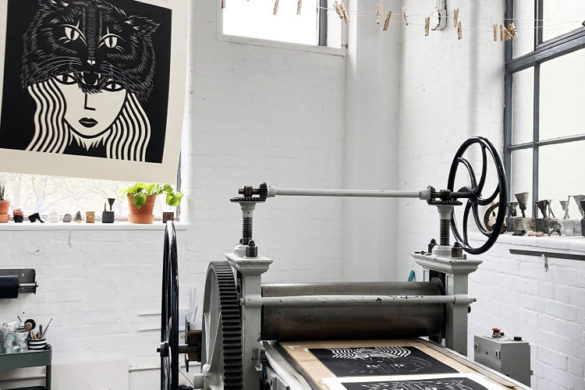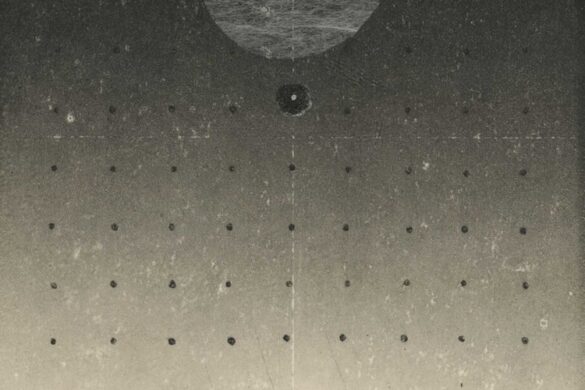In the dynamic realm of printing, flexography is a beacon of versatility and efficiency. Here, we dive into the fascinating world of flexography, exploring its processes, applications, and the unique advantages it offers, and will highlight the exclusive appeal of our limited edition Print Isn’t Dead stickers, a testament to the enduring power of print in a digital age.
 Understanding Flexography
Understanding Flexography
Flexography, often abbreviated as ‘flexo’, is a modern printing process that employs flexible relief plates for printing on a variety of substrates. Its adaptability allows for printing on paper, plastic, metallic films, and even non-flat surfaces. The technique uses quick-drying, semi-liquid inks, and is especially favoured for high-volume jobs.
The Process
-Design and Plate Creation: The first step involves creating a design and transferring it onto a flexible polymer plate. Each colour requires a separate plate.
-Inking System: Flexo uses a unique rolling drum (anilox) to transfer ink onto the printing plate.
-Printing and Drying: The plate, mounted on a rotating cylinder, prints the image onto the substrate. UV lights or heat systems dry the ink rapidly.
Applications of Flexography
Flexography’s versatility makes it suitable for a broad range of applications:
-Packaging and Labels: Flexo is dominant in the packaging sector, ideal for food packaging, bottle labels, and shopping bags.
-Flexible Electronics: Used in printing conductive circuits on flexible substrates.
-Wallpaper Printing: Flexo handles large rolls of wallpaper efficiently.
-Envelope Printing: High-speed printing for mass production of envelopes.
-Newspaper Printing: Its fast-drying ink is perfect for newspapers.
-Medical Products: Printing on medical pouches and IV bags.
-Folding Cartons: Ideal for creating vibrant, high-quality images on cartons.
-Our “Print Isn’t Dead” Stickers: These limited edition stickers, crafted through flexography, demonstrate the high-quality, vibrant prints achievable with this technique.
Positive Aspects of Flexography
Flexography offers several advantages:
-Versatility: Prints on a multitude of substrates, from paper to plastic.
-Speed: High-speed production makes it cost-effective for large runs.
-Quality: Produces high-quality, vibrant images, and text.
-Environmental Considerations: Uses energy-efficient drying processes and environmentally friendly water-based inks.
-Customisation: Easily adapts to different sizes and shapes.
 Our Print Isn’t DeadTM Stickers
Our Print Isn’t DeadTM Stickers
Our limited edition Print Isn’t Dead stickers are a testament to the prowess of flexography.
They showcase:
-Sharp & Solid Details: Thanks to flexo’s precision.
-Durability: Resistant to fading and wear, suitable for various surfaces.
-Limited Edition Appeal: Emphasising the unique value of printed products in a digital world.
-Holographic eggshell substrate: Be careful where you place the sticker because they are very difficult to remove.
The Future is Bright with Flexography
Flexography represents a harmonious blend of tradition and innovation in the printing industry. Its adaptability and efficiency make it a preferred choice for a wide array of applications, proving that print is very much alive and thriving. The nearly sold-out Print Isn’t Dead stickers serve as a perfect example of flexography’s capability to produce visually stunning and high-quality prints, affirming the continued relevance and charm of printed materials in our digital age.
Be sure to grab your limited edition Print Isn’t Dead sticker before they’re all gone, and join us in celebrating the enduring legacy of print through the incredible technology of flexography.
- Celebrate 25 Years of OFFF Barcelona: Where Creativity, Art, and Digital Innovation Collide - February 18, 2025
- Type Transformed: How Monotype Fonts Shaped Posterzine’s New Issues - February 12, 2025
- Behind the Fold: The Monotype x Posterzine Collaboration - February 11, 2025

